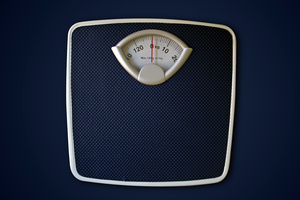
Most people “diet” to lose weight. The diet might involve specific types of foods or beverages, but ultimately what causes someone to effectively lose weight is the reduced calories. However, there’s another end of the diet spectrum. Some people don’t find it easy to take in the calories that they need. They might become full quickly, have trouble dealing with a newly developed intolerance or allergy, not realize how much they need to eat to make up for an increase in exercise, or simply lose their appetite.
I have a friend, “John,” who was consistently losing to the point that it was detrimental to his athletic performance. After being told that he needed to gain some pounds back, because his body was breaking down his muscles for energy due to of the lack of fat, he started loading up his plate at dinner time. Halfway through the meal his eating would slow dramatically. He would explain that he wanted to eat more, but he was already full and tired of eating. He simply didn’t have the appetite necessary to eat enough of the food. Here are some tips he followed on his road to weight recovery.
Adding more meals to your day.
A plate full of food might be too much to take in at one time, but if you eat the first half early in the evening and the second half a couple hours later, it can be much more manageable.
Adding snacks to your day.
If the additional meals still don’t cut it, nuts and granola are high-calorie snacks that can be consumed throughout the day. A fruit smoothie for dessert can make a healthy, high-calorie treat.
Drinking your calories.
Drinking milk or fruit juices instead of water with one’s meals can quickly increase caloric and nutritional intake.
Adding a bit more protein.
Protein-rich substances tend to get you feeling fuller faster, but they are also imperative for weight gain in order to build up muscles from a lean state.
Using spreads on sandwiches.
When John mentioned his trouble with weight gain to his team, one of his teammates suggested his favorite sandwich: peanut butter, butter, and sugar. Yikes! There are certainly healthier ways to slip calories onto a sandwich. Peanut butter is a popular choice for many, but another healthy, high-calorie alternative is an avocado spread.
For every pound one is looking to gain in a given week, an extra 500 calories needs to be consumed (on top of the caloric intake that would be sufficient for sustaining one’s weight) per day! Gaining two pounds per week is considered a healthy weight gain rate.











